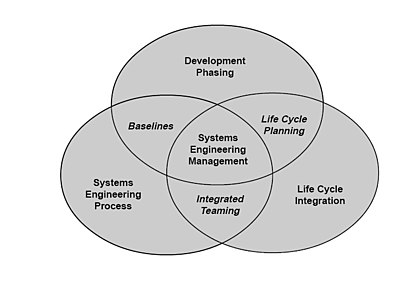
A
software development process is a structure imposed on the development of a software product. Synonyms include
software life cycle and
software process. There are several
models for such processes, each describing approaches to a variety of
tasks or activities that take place during the process.
Requirements analysis
The most important task in creating a software product is extracting the requirements or requirements analysis. Customers typically have an abstract idea of what they want as an end result, but not what software should do. Incomplete, ambiguous, or even contradictory requirements are recognized by skilled and experienced software engineers at this point. Frequently demonstrating live code may help reduce the risk that the requirements are incorrect.
Once the general requirements are gleaned from the client, an analysis of the scope of the development should be determined and clearly stated. This is often called a scope document. Certain functionality may be out of scope of the project as a function of cost or as a result of unclear requirements at the start of development. If the development is done externally, this document can be considered a legal document so that if there are ever disputes, any ambiguity of what was promised to the client can be clarified.
Domain Analysis is often the first step in attempting to design a new piece of software, whether it be an addition to an existing software, a new application, a new subsystem or a whole new system. Assuming that the developers (including the analysts) are not sufficiently knowledgeable in the subject area of the new software, the first task is to investigate the so-called "domain" of the software. The more knowledgeable they are about the domain already, the less work required. Another objective of this work is to make the analysts, who will later try to elicit and gather the requirements from the area experts, speak with them in the domain's own terminology, facilitating a better understanding of what is being said by these experts. If the analyst does not use the proper terminology it is likely that they will not be taken seriously, thus this phase is an important prelude to extracting and gathering the requirements. If an analyst hasn't done the appropriate work confusion may ensue: "I know you believe you understood what you think I said, but I am not sure you realize what you heard is not what I meant."[1]
Specification
Specification is the task of precisely describing the software to be written, possibly in a rigorous way. In practice, most successful specifications are written to understand and fine-tune applications that were already well-developed, although safety-critical software systems are often carefully specified prior to application development. Specifications are most important for external interfaces that must remain stable. A good way to determine whether the specifications are sufficiently precise is to have a third party review the documents making sure that the requirements and Use Cases are logically sound.
Architecture
The architecture of a software system or software architecture refers to an abstract representation of that system. Architecture is concerned with making sure the software system will meet the requirements of the product, as well as ensuring that future requirements can be addressed. The architecture step also addresses interfaces between the software system and other software products, as well as the underlying hardware or the host operating system.
Design, implementation and testing
Implementation is the part of the process where software engineers actually program the code for the project.
Software testing is an integral and important part of the software development process. This part of the process ensures that bugs are recognized as early as possible.
Documenting the internal design of software for the purpose of future maintenance and enhancement is done throughout development. This may also include the authoring of an API, be it external or internal.
Deployment and maintenance
Deployment starts after the code is appropriately tested, is approved for release and sold or otherwise distributed into a production environment.
Software Training and Support is important because a large percentage of software projects fail because the developers fail to realize that it doesn't matter how much time and planning a development team puts into creating software if nobody in an organization ends up using it. People are often resistant to change and avoid venturing into an unfamiliar area, so as a part of the deployment phase, it is very important to have training classes for new clients of your software.
Maintenance and enhancing software to cope with newly discovered problems or new requirements can take far more time than the initial development of the software. It may be necessary to add code that does not fit the original design to correct an unforeseen problem or it may be that a customer is requesting more functionality and code can be added to accommodate their requests. It is during this phase that customer calls come in and you see whether your testing was extensive enough to uncover the problems before customers do.






